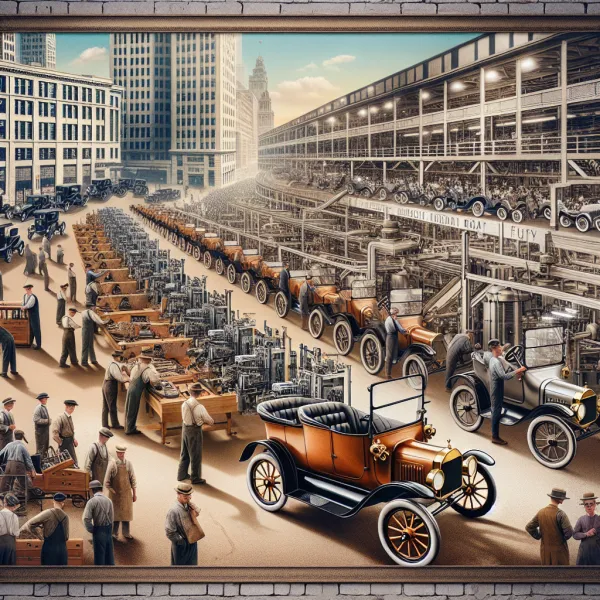The Revolutionary Ford Model T: A Car That Changed the World
The Revolutionary Ford Model T: A Car That Changed the World
The Ford Model T, often referred to as the 'Tin Lizzie,' is one of the most iconic automobiles in history. Introduced by the Ford Motor Company in 1908, this groundbreaking vehicle not only transformed the automotive industry but also reshaped society by making cars affordable and accessible to the average person.
The Birth of the Model T
When Henry Ford founded the Ford Motor Company in 1903, his vision was clear: to create a car that was reliable, affordable, and easy to maintain. This vision came to life with the introduction of the Model T on October 1, 1908. Priced at just $850 (equivalent to about $25,000 today), the Model T was a game-changer in the automobile market.
The Model T was powered by a 2.9-liter, 4-cylinder engine that produced 20 horsepower, allowing it to reach a top speed of 45 miles per hour. It was simple, durable, and versatile, making it suitable for both urban and rural environments. Ford's innovative use of vanadium steel made the car lightweight yet strong, further enhancing its appeal.
Mass Production and the Assembly Line
One of the most significant contributions of the Model T was its role in pioneering mass production techniques. In 1913, Ford introduced the moving assembly line, which revolutionized manufacturing processes. This innovation reduced the time it took to assemble a Model T from 12 hours to just 93 minutes, drastically lowering production costs.
By 1925, the price of a Model T had dropped to as low as $260, making it affordable for millions of Americans. This democratization of automobile ownership was a pivotal moment in history, as it allowed people from all walks of life to experience the freedom and convenience of personal transportation.
Impact on Society
The Ford Model T had a profound impact on society. It not only revolutionized transportation but also spurred economic growth and urbanization. Roads were improved, gas stations and repair shops sprang up, and industries such as steel, rubber, and glass flourished to meet the demands of automobile production.
Moreover, the Model T played a significant role in shaping American culture. It gave people the freedom to travel, explore new places, and connect with others in ways that were previously unimaginable. As Henry Ford famously said,
I will build a motor car for the great multitude.The Model T truly lived up to this promise.
The End of an Era
By the late 1920s, competition in the automobile industry had intensified, and consumer preferences began to shift toward more modern and stylish vehicles. In 1927, after producing over 15 million units, Ford ceased production of the Model T to make way for its successor, the Model A.
Despite its discontinuation, the legacy of the Model T endures. It remains a symbol of innovation, accessibility, and the transformative power of technology.
The Legacy of the Model T
Today, the Ford Model T is celebrated as a milestone in automotive history. It is a reminder of how a single innovation can change the world. Classic car enthusiasts and historians continue to honor the Model T for its role in shaping the modern era.
Whether you're a car enthusiast or simply someone who appreciates history, the Ford Model T stands as a testament to the ingenuity and vision of Henry Ford and his team. It is more than just a car; it is a symbol of progress and possibility.
